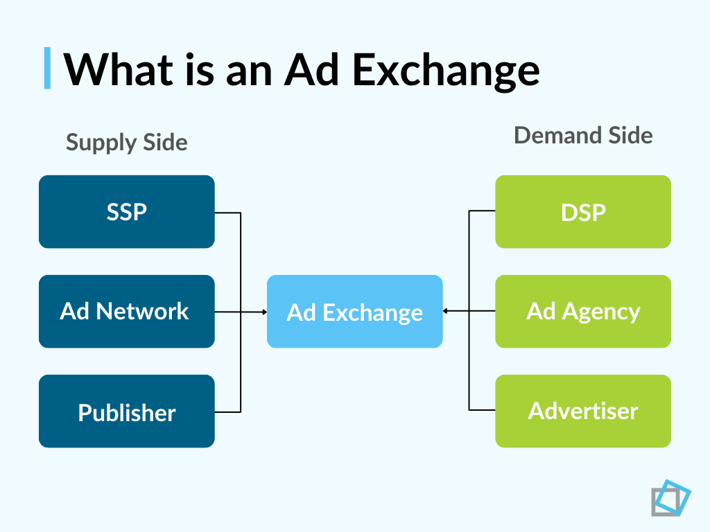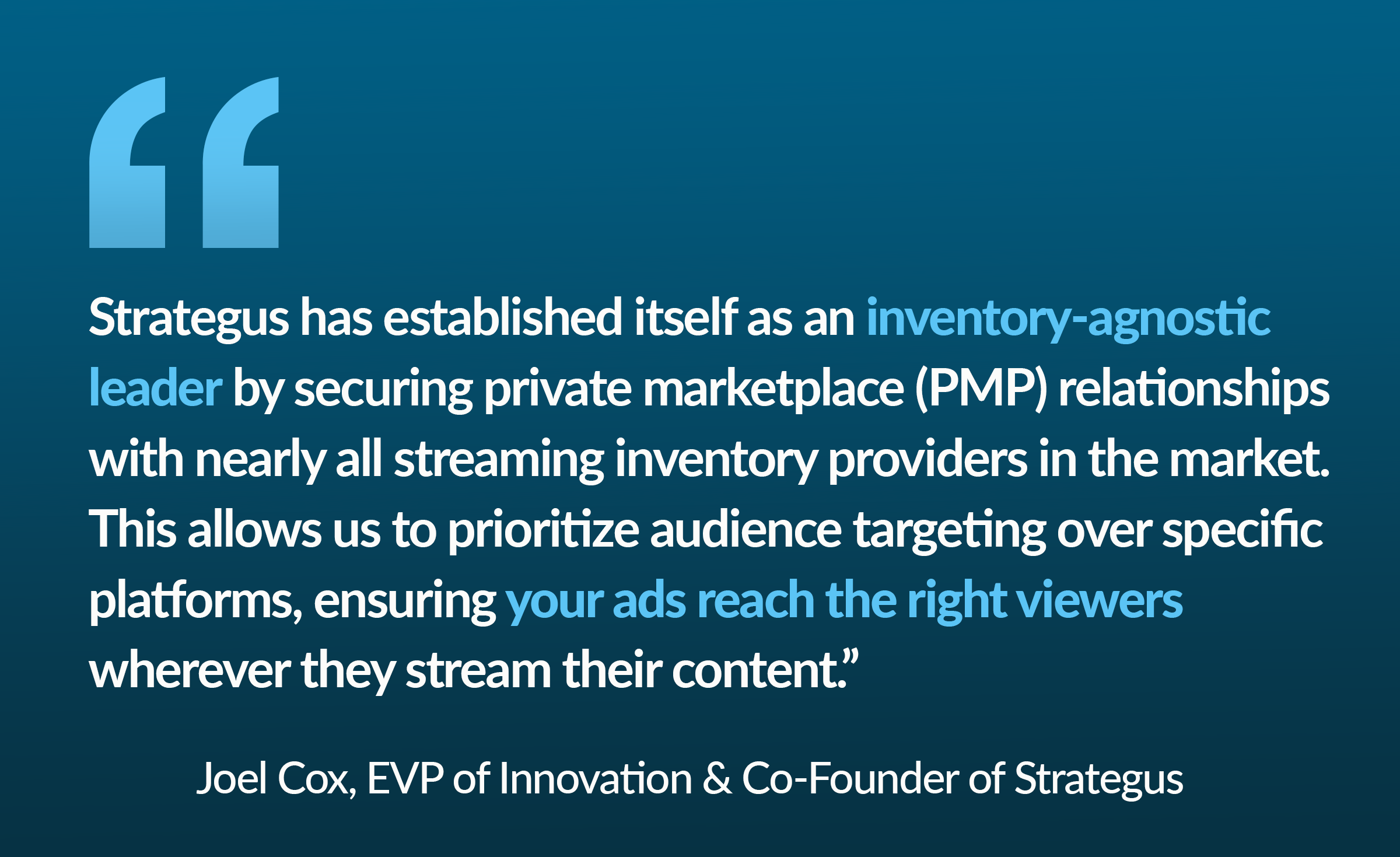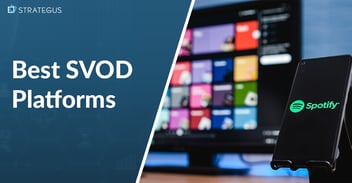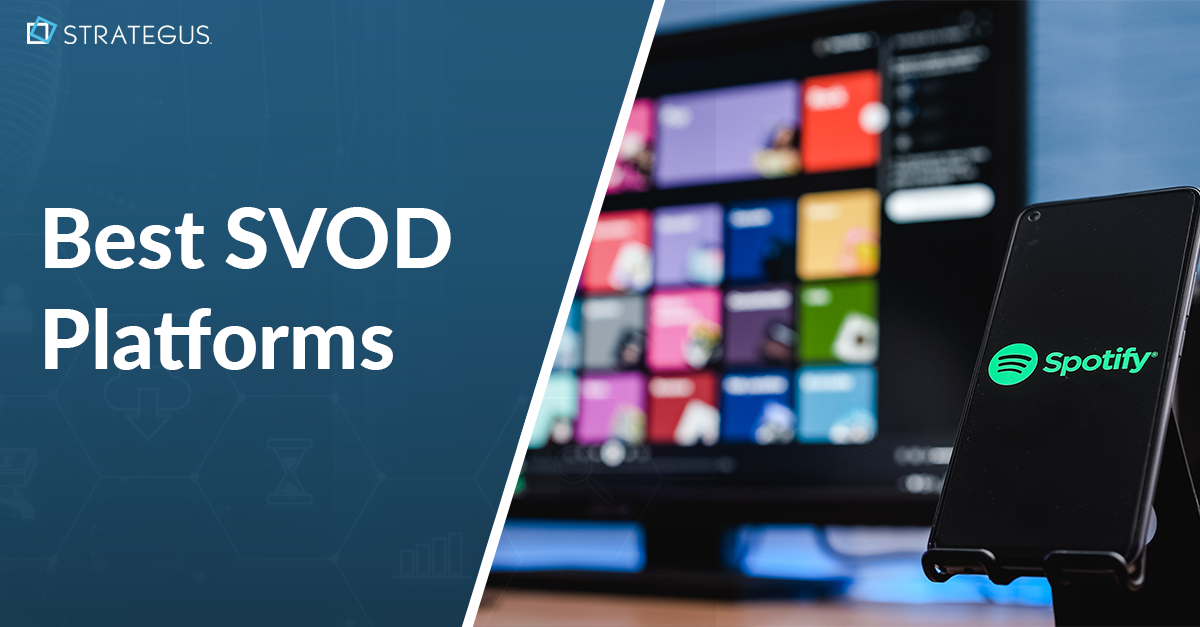- Home
- Strategus Blog
- What Is an Ad Exchange and How Does It Work
What Is an Ad Exchange and How Does It Work
 Traci Ruether
Traci Ruether
8 minutes read

Before ad exchanges, media inventory was exclusively purchased through direct negotiations with publishers. This worked fine in the early days. But as more publishers popped up, the process became lengthy and hands-on.
Ad exchanges helped alleviate this by streamlining ad buying with a technology-driven approach. This gave marketers the ability to purchase ad inventory on a per-viewer basis using real-time bidding (RTB), which brought us into today’s world of programmatic advertising.
But ad exchanges were only the start. More platforms designed to automate media buying came into the picture, and the online advertising ecosystem grew in complexity.
Today, the ad tech supply chain is made up of supply-side platforms (SSPs), data providers, ad networks, demand-side platforms (DSPs), and more. While each component plays a role, it can be tricky to understand how they fit together.
In this primer on ad exchanges, we spell out what ad exchanges are, how programmatic media buying works, and tips for marketers navigating the complex world of connected TV (CTV) advertising.
What Is an Ad Exchange?

Ad exchanges provide a place for vendors to buy and sell TV inventory using programmatic real-time bidding. These digital marketplaces connect advertisers, supply-side platforms (SSPs), demand-side platforms (DSPs), and publishers. Popular ad exchanges in the connected TV (CTV) industry include OpenX and Magnite.
Benefits of Ad Exchanges
The benefits of ad exchanges are many. They enable a more data-driven approach to advertising, which means less ad waste and more relevant viewing experiences. What’s more, the efficiency of programmatic advertising can’t be beat.
Limitations of Ad Exchanges
One major concern with ad exchanges is ad fraud. Since ad exchanges operate in a digital space with numerous intermediaries, there's a risk of fraudulent activity such as bot traffic or ad stacking.
Another limitation is inventory quality and breadth. Because ad exchanges rely on relationships with publishers to access their inventory, advertisers may face restrictions in reaching their desired audience or accessing premium placements depending on the ad exchange they use.
Let’s back up and look at what options marketers have when buying CTV inventory to explore this further.
How Do Marketers Buy CTV Ad Inventory?
CTV ad inventory can be bought in two ways: programmatically using an ad exchange or via direct sales. Here’s how the two compare.
Programmatic Ad Buying |
Direct Sales |
|
|
Programmatic ad buying provides more flexibility and efficiency than the direct sales approach. For this reason, almost 90% of CTV buys are transacted programmatically. But within the programmatic category, marketers
face another crossroads between open and private marketplaces.
Open Ad Exchanges vs. Private Ad Exchanges
Ad exchanges come in two different flavors: open ad exchanges and private marketplaces. The difference between the two comes down to inventory quality and access.
- Open ad exchanges can be accessed by any advertisers looking to buy inventory, as well as third-party ad networks looking to resell ad space. Think of these as the eBay of digital inventory.
- Private marketplaces (PMPs) are more exclusive, controlling which media buyers can participate. These restricted environments provide access to premium inventory, which helps prevent ad fraud and ensure brand safety. PMPs are more like invite-only shopping events at luxury stores (to extend the metaphor from the last bullet).
Because PMPs combine the premium content that media buyers demand with the efficiency of programmatic buying, they’re often the best option. But to gain access to a PMP, advertisers need to establish relationships with publishers or work with a CTV provider like Strategus with a network of inventory partners.

How Do Ad Exchanges Work
Machine learning, also referred to as AI, is the driving force behind ad exchanges. It’s what allows ads to be bought on a per-viewer basis without any human intervention during the bidding process.
More specifically, the programmatic ad-buying process works as follows:
- A user settles in for their favorite show on a streaming app like Hulu, Tubi, or YouTube TV.
- The app sends a bid request to an SSP looking for advertisers to compete for the ad spot. The request includes information about the user’s digital footprint, such as their viewing habits, demographics, location, and more.
- An ad exchange connects the SSP with DSPs to centralize and automate media buying across multiple sources.
- A DSP or an ad network connects advertisers to the exchange, allowing them to set parameters for how they target ads, and then make purchases via real-time bidding.
- In a split second, the highest bidder wins the ad slot, and the viewer is served a relevant commercial without any noticeable lag.
What occurs behind the scenes is painstakingly complex. But for the viewer, it’s seamless. So why are there so many moving parts? Let’s take a closer look.
Ad Exchanges vs. Ad Networks vs. DSPs: The Programmatic Supply Chain
Confused by the alphabet soup that is CTV advertising? You’re not alone. Here’s how different components work together across the complicated web of programmatic CTV.
Supply-Side Platforms (SSPs)
SSPs serve publishers and content owners. They enable the selling of ad inventory by acting as the middleman between publishers with ad exchanges. SSPs send bid requests to the ad exchanges when ad space becomes available, providing detailed information about the audience.
Ad Exchanges
Serving as the central hub, ad exchanges connect SSPs and DSPs, facilitating the real-time auction of ad impressions. The instantaneous nature of these auctions allows for efficient and competitive ad buying, ensuring that the highest bidder secures the ad space.
Demand-Side Platforms (DSPs)
On the flip side of SSPs, DSPs represent advertisers. They evaluate bid requests from SSPs and use algorithms to decide which ad impressions to bid on and at what price. DSPs play a crucial role in ensuring that advertisers' messages reach the right audiences.
Ad Networks
Ad networks may also participate in the bidding process as resellers. These aggregate inventory from multiple sources and offer it to advertisers, providing additional options for reaching their target audience. Many ad networks buy inventory from ad exchanges and then mark it up — only further complicating the CTV supply chain.
Data Providers
Data is the backbone of programmatic advertising. Data providers supply valuable information about user behavior, demographics, and preferences. Advertisers leverage this data to make informed decisions and target specific audience segments effectively.
Where do Managed CTV Services Come Into Play?
Given the complexity, the question arises: how can marketers simplify the process of CTV media buying while still capitalizing on its potential? This is where managed CTV services enter the picture. Rather than navigating the intricacies of ad exchanges and forging relationships with multiple vendors, many marketers opt for a managed services approach, which offers personalized guidance and hands-on execution.
How to Simplify CTV Media Buying With Strategus
The CTV ecosystem grows in complexity each day. Countless ad networks, DSPs, ad exchanges, and more vie for media buyers’ attention. Getting the full benefit of CTV requires integrations across the ecosystem, as well as expertise.
Agencies and brands looking to take advantage of this growing channel must either build out a roster or vendor partnerships and commit substantial budget to monthly minimums, or partner with a managed services CTV provider.
At Strategus, we team up with brands and agencies to deliver high-performance CTV campaigns with ease. Our CTV advertising solutions provide direct integration with ad exchanges, SSPs, DSPs, publishers, and data partners — minimizing the complexity of it all.
Our managed services approach means that we offer personalized guidance and hands-on execution every step of the way. Think of us as your partner to CTV success — delivering both the breadth of integrations and depth of experience required to drive results.
The CTV is also dynamic, which is why we’re constantly vetting new partners and testing new technology. Our vendor-agnostic approach ensures flexibility in how we approach each campaign and the agility required to stay on the cutting edge.
Rather than considering which DSPs or ad exchanges are best for your business, make things simple and gain instant access to deep integrations across the industry. Contact us today to get started.

Traci Ruether is a content marketing consultant specializing in video tech. With over a decade of experience leading content strategy, she takes a metrics-driven approach to storytelling that drives traffic to her clients' websites. Follow her on LinkedIn or learn more at traciruether.com.
Strategus is a managed services connected TV(CTV) advertising agency with over 60,000+ campaigns delivered. Find out how our experts can extend your team and drive the result that matter most.
Talk to an Expert
Table of Contents
Seeking a Custom CTV Strategy That Delivers?
What to read next

Best SVOD Platforms for Advertisers
The streaming wars have a new battlefront, and this time, it's all about your ad budget. Just a few years ago, SVOD meant "no commercials." Now, it...
12 minutes read

Third-Party Data Targeting for CTV: Benefits & Tactics
Third-party data. It’s a term that’s thrown around, and yet few take the time to detail its pros and cons — much less strategies for using...
7 minutes read

First-Party Data Targeting: Benefits and Tactics for CTV Advertising
First-party data is the information that companies collect directly from their customers rather than through intermediaries. Advertisers use this...
10 minutes read

Foot-Traffic Attribution: Tying Ad Impressions to In-Store Visits
The marketing funnel has changed. Today’s shoppers often begin researching products from the comfort of their homes and don’t set foot into a store...
8 minutes read















